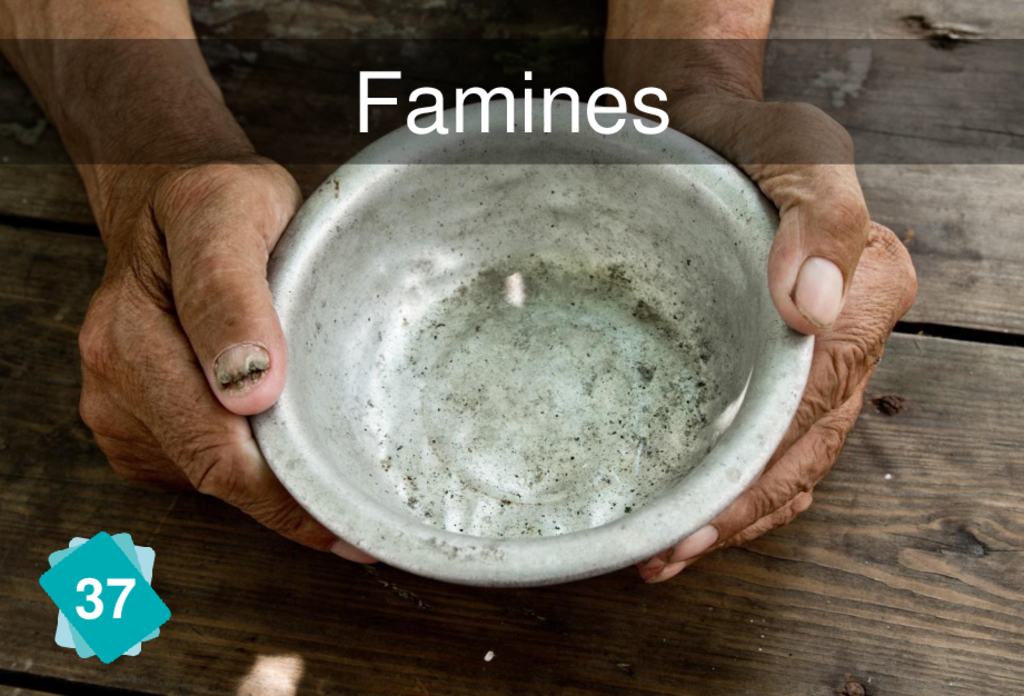En-en adult card 37 famines: Difference between revisions
Jump to navigation
Jump to search
m (Minor corrections) |
No edit summary |
||
| Line 4: | Line 4: | ||
|title=Famines | |title=Famines | ||
}} | }} | ||
== Correction== | |||
===Causes=== | |||
* [[En-en_adult_card_27_marine_biodiversity|Marine Biodiversity]] | |||
* [[En-en_adult_card_32_decline_agricultural_yields|Decline Agricultural Yields]] | |||
=== Consequences === | |||
*[[En-en_adult_card_38_human_health|Human Health]] | |||
*[[En-en_adult_card_39_climate_refugees|Climate Refugees]] | |||
== Other possible links == | == Other possible links == | ||
=== | === Other causes === | ||
[[En-en adult card 31 freshwater resources|Freshwater resources]] if we consider that a famine is not only a lack of food but also a lack of water. | [[En-en adult card 31 freshwater resources|Freshwater resources]] if we consider that a famine is not only a lack of food but also a lack of water. | ||
Revision as of 11:58, 5 April 2021
Card #37: Famines
| Causes | Consequences | |

|
Starvation can be caused by lower agricultural yields and by the reduction of marine biodiversity.
Correction
Causes
Consequences
Other possible links
Other causes
Freshwater resources if we consider that a famine is not only a lack of food but also a lack of water.
To go further
12th March 2020: The Food and Agriculture Organization warns of a new locust invasion in Kenya in Somalia and Ethiopia (terrestrial biodiversity) that poses an unprecedented threat to food security (lower agricultural yields)[1].
Decrease in the quantity of fruit trees in the Sahel[2].
Crop yields in South Asia declining despite technological improvements[3].